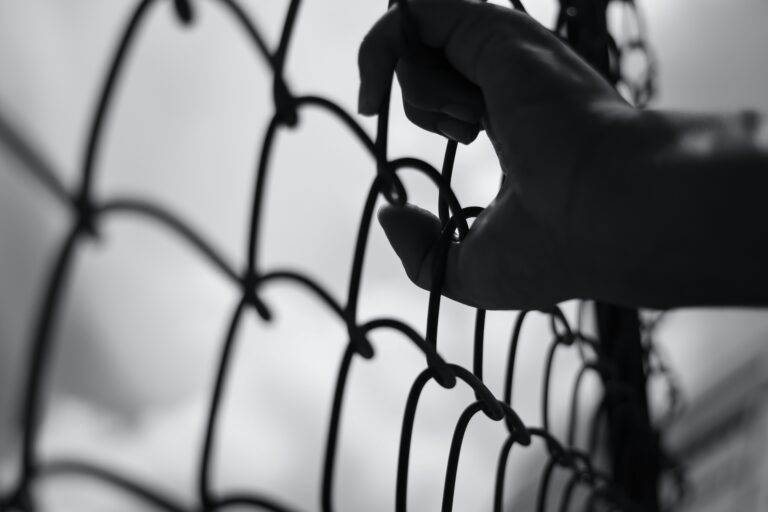The Fragile Return: Challenges in Rehabilitating Former Terror Offenders

The reintegration of former terrorism convicts (commonly referred to in Indonesia as napiter) represents a strategic effort that is both complex and multidimensional. Despite various rehabilitation and deradicalisation initiatives rolled out by the government, socio-cultural, ideological, and institutional dynamics have made the reintegration process far from optimal. It is not merely an administrative matter; rather, it requires the resolution of foundational issues such as public acceptance, ideological transformation, and institutional readiness.
From a social perspective, reintegration demands the restoration of the social function of individuals previously involved in ideologically motivated violence. The ultimate goal is to ensure that they return as productive citizens without posing a renewed threat. However, field realities suggest persistent obstacles. Many former convicts face social rejection, economic hardship, and in some cases, a relapse into terrorist networks. This indicates that reintegration requires more than formal procedure; it demands an adaptive approach tailored to individual needs and community context.
One of the most significant barriers is the social stigma attached to former terrorists. The public continues to perceive them as latent threats. This sentiment stems from collective trauma caused by past terrorist incidents in the country. In this context, communities often refuse to accept their return, cutting off job opportunities and access to social spaces, which in turn generates counterproductive alienation. Sociological studies confirm that such exclusion can be a major trigger for reconnection with extremist ideologies.
From an internal standpoint, the greatest challenge stems from the persistence of extremist ideological beliefs among some former convicts. Although they may have formally served their sentences, the deconstruction of radical ideology is rarely immediate. These belief systems—particularly those rooted in exclusive religious narratives—often leave deep cognitive and emotional residues. In certain cases, individuals feign compliance with deradicalisation programmes while secretly maintaining ties with radical sympathisers.
As such, reintegration must be approached holistically and in an integrated manner. It is insufficient to rely solely on formal measures such as spiritual guidance or vocational training. There must be integration between psychological intervention, cultural engagement, and alternative religious narratives that can counterbalance extremist constructions. Support from moderate religious leaders and local communities plays an essential role in this model of sustainable reintegration. Equally important is a public campaign to dismantle the prevailing stigma, so that society becomes part of the healing process rather than an obstacle to it.
Procedurally, the Indonesian government has established stages of reintegration, particularly for returnees from overseas conflict zones. These stages include initial identification, ideological and psychological assessments, participation in rehabilitation programmes, and eventual reintegration into society. The rehabilitation phase involves ideological coaching, vocational training, and civic education. Reintegration is then carried out through support from government agencies, community leaders, and security apparatuses.
Nevertheless, implementation within correctional institutions continues to face serious challenges. Rehabilitation within prisons remains suboptimal, as evidenced by the continued recruitment and strengthening of extremist networks behind bars. The lack of specific programmes for terrorism offenders, the shortage of trained personnel familiar with Islamic ideology, and a permissive legal culture have all weakened the rehabilitative capacity of the prison system. In many instances, these programmes are perceived merely as formalities to obtain sentence reductions, without addressing ideological substance.
Over time, deradicalisation methods have also shifted. Initially, the approach was largely counter-ideological, involving direct engagement—penetration, as it is called—between civil society religious leaders and terrorist inmates. However, this method proved ineffective as many inmates became defensive. Since 2015, the focus has shifted towards more psychological strategies: emotional expression, cognitive flexibility, and the internalisation of religious values within a democratic civic framework.
A tangible case illustrating this is that of a teenager named Jamil, who had been taken by his father to Marawi in the Philippines and repatriated to Indonesia in 2021. Upon return, Jamil was temporarily housed at Sentra Handayani and received ongoing support from the Indonesian Ulema Council (MUI) via Bureau of the Prevention of Extremism and Terrorism (BPET). His reintegration proceeded relatively safely and was accepted by the community. This case underscores the importance of cross-sectoral involvement and the availability of effective public communication and support systems.
Post-reintegration supervision remains a critical component. In the national security context, the National Counterterrorism Agency (BNPT) and intelligence agencies play a key role in monitoring former convicts periodically. This monitoring aims to detect signs of re-radicalisation. Should indications of renewed involvement arise, the state can deploy responsive interventions or legal measures. However, the effectiveness of this system remains debatable. A survey conducted by terrorism expert Ali Abdullah Wibisono of the University of Indonesia revealed that only around 30 per cent of terrorism convicts truly undergo ideological change after participating in deradicalisation programmes. The rest merely comply administratively, without substantive transformation. Moreover, many programmes still lack proper evaluation systems and documentation, making it difficult to objectively measure their effectiveness.
A particularly illustrative example of the threat of recidivism is the Abu Omar group. According to data from the Foreign Terrorist Fighters Task Force (FTF) of BNPT, since October 2023, Indonesia’s Densus 88 counterterrorism unit has arrested 51 individuals linked to this network—15 of whom were former terrorism convicts. Remarkably, 13 of those 15 were unconditionally released, meaning they were never required to pledge allegiance to the Indonesian state. Abu Omar himself, released in 2019 after serving a 10-year sentence, began organising religious study groups that served as a platform for regrouping former convicts who still adhered to radical ideologies. Though held only once or twice a month, these sessions became the driving force behind ideological reinforcement and recruitment. This case starkly highlights the high-risk nature of unconditionally released ex-convicts and the need for targeted strategies to prevent relapse into violent extremism.
Another obstacle to effective reintegration is the limitation of resources. Whether in terms of funding, expert personnel, or supporting infrastructure, there remains a significant gap between needs and current capacity. Furthermore, inter-agency coordination is often siloed and unsynchronised. Yet successful reintegration demands collaboration across government, civil society, academia, and families.
To strengthen policy effectiveness, the “5R” approach offers a compelling strategic framework: Repatriation, Rehabilitation, Resettlement, Reintegration, and Resilience. This model underscores that reintegration is not merely a technical procedure, but a long-term social intervention that requires both individual resilience and sustained community support. In parallel, social reintegration ideally includes former terrorism offenders who have pledged loyalty to the Republic as actors in the mentoring process—providing a more empathetic and experience-based approach.
Deradicalisation within correctional facilities typically follows four stages: identification, rehabilitation, re-education, and resocialisation. Identification involves mapping levels of radicalisation and psychosocial profiles. Rehabilitation consists of personality development, including national values and moderate religious teachings, along with economic self-sufficiency training. Re-education aims to broaden inmates’ perspectives through formal and informal education. Finally, resocialisation prepares them to return to society with values that do not deviate from the social norm. Together, these stages serve as a critical foundation for long-term reintegration.
In addition, the “3N” philosophy—Nurani (conscience), Needs, and Narrative—serves as an emotional and cognitive framework for deradicalisation efforts. Nurani addresses spiritual and emotional dimensions; Needs respond to existential and economic challenges; and Narrative involves constructing a new, peaceful and inclusive ideological worldview. All three must operate in tandem to ensure that deradicalisation and reintegration are comprehensive. Yet in practice, many inmates exhibit behavioural change without ideological transformation. This reinforces the crucial distinction between deradicalisation and disengagement, where an individual may abandon violent action without truly abandoning extremist beliefs.
Given these dynamics, the reintegration of former terrorism convicts cannot be understood as a mere technocratic exercise. It requires collective awareness, humane approaches, and long-term strategic planning. If managed seriously and collaboratively, reintegration can not only close the door to recurring radicalism but also open a path toward genuine social reconciliation and stronger national stability.
Muhammad Makmun Rasyid is a Member of the Bureau of the Prevention of Extremism and Terrorism (BPET) at the Indonesian Council of Ulama (Majelis Ulama Indonesia). He has authored 15 books on Islam, including a counterterrorism trilogy in Bahasa Indonesia: Menangkal Bahaya Radikal-Terorisme: Upaya-Upaya Teologi dan Ideologi di Indonesia (2023), Api Pemikiran Abdullah Azzam: Dari Idealisme Bergeser ke Jihadisme (2024), and Desentralisasi Terorisme (2025). He has also written a trilogy countering Hizb ut-Tahrir’s caliphate narrative, including HTI Gagal Paham Khilafah (2016), Say No to Khilafah Hizbut Tahrir Indonesia (2020), and Mabuk Khilafah: Para Tokoh di Balik Miskonsepsi Penafsiran Khilafah (2022).



